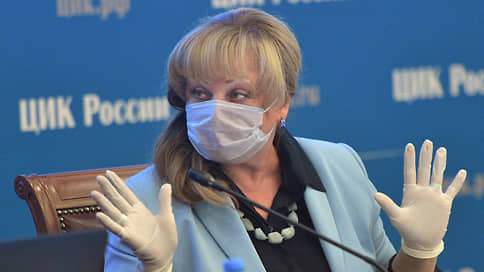COVID-19 is going to the polls
[ad_1]

Ella Pamfilova, Chairperson of the Central Election Commission, announced on Wednesday that a “mask regime” is being resumed in the commission building amid an increase in the incidence of coronavirus. And the regions where they decided to vote in the autumn elections for less than three days, she recommended to think about measures to counteract the spread of infection. This year, the regions decided on the number of voting days on their own, and this happened at a time when the incidence was the lowest since the beginning of the year. And where the three-day expression of will was retained, this was justified not by sanitary measures, but by additional opportunities for voters. The expert notes that there is uncertainty around the new wave of coronavirus, and the three-day voting is convenient for mobilizing voters.
The number of voting days in those regions where a decision was made on a one- or two-day expression of will will not change, despite the trend towards an increase in the incidence of coronavirus. This was stated at a meeting of the Central Election Commission on August 10, its chairman Ella Pamfilova.
“This is excluded because the decision to vote in elections, including repeat voting, repeat elections, referendums, for several consecutive days, not more than three days, can be taken by the relevant election commission no later than ten days from the date of publication of the decision on the appointment elections,” Ms. Pamfilova explained. Thus, where voting is already scheduled within one or two days, this decision is not subject to revision. At the same time, the chairman of the Central Election Commission, who participated in the meeting remotely, asked colleagues in such regions to analyze the incidence trend and think about what package of measures can be taken “so that they are aimed at counteracting the spread of infection.” The Central Election Commission itself has already introduced a “mask regime”, although Rospotrebnadzor has not yet recommended resuming it.
On the Single Voting Day on September 11, direct elections will be held for the heads of Buryatia, Karelia, Udmurtia and Mari El, as well as the governors of Vladimir, Tambov, Yaroslavl, Tomsk, Kirov, Saratov, Ryazan, Kaliningrad, Novgorod and Sverdlovsk regions. In addition, residents of North Ossetia, Udmurtia, Krasnodar Territory, Penza, Saratov and Sakhalin regions will elect new regional parliaments. Finally, elections of municipal deputies will be held in 11 administrative centers of the subjects of the Russian Federation – Gorno-Altaisk, Cherkessk, Barnaul, Petropavlovsk-Kamchatsky, Vladivostok, Kirov, Kursk, Omsk, Pskov, Tver and Yaroslavl.
Unlike in 2020-2021, when voting in regional and federal elections took place everywhere for three days due to the coronavirus (and the all-Russian plebiscite on amendments to the Constitution lasted a week), in 2022 the Central Election Commission left this issue to the discretion of the regions. As a result, the majority of regional election commissions decided, as at the peak of the pandemic, to vote for three days, although this time with a different argument – in order to “create additional opportunities for the exercise of citizens’ electoral rights.”
But there are also regions where the “pandemic” format has been completely or partially abandoned. So, in North Ossetia, Kirov and Tomsk regions, voting will last two days, and in Buryatia, Mari El, Sverdlovsk region and Kamchatka, they will vote in the old fashioned way – only one day.
Decisions on the number of voting days were made by election commissions in June, when the total number of new infections in Russia as a whole was minimal since the beginning of the year and fluctuated between 3-4 thousand per day. However, since mid-July, there has been a trend towards an increase in the incidence rate. As of August 10, Russia recorded the highest rate since March 26 of 23.8 thousand new cases. Most of the cases are traditionally in Moscow – 8.6 thousand, and this is almost twice as many as the day before (4.7 thousand cases were recorded on August 9). But in the capital, in the municipal elections, citizens will vote for three days, as well as using the online format.
However, while in the regions where the voting will be one-day, the increase in new cases, if it tends to increase, the values are still very far from the peaks that were recorded in February this year. For example, on August 10, 17 new cases of infection were detected in Mari El (on peak days there were over 500 cases per day); in the Kamchatka Territory – 39 (over 400); in Buryatia — 61 new cases (peak values exceeded 1.6 thousand per day), in the Sverdlovsk region — 387 (over 5.5 thousand). In regions with two-day voting, the situation is similar. As of August 10, 97 new cases were recorded in the Tomsk region (against about 1.7 thousand at the peak); in the Kirov region – 44 (2.1 thousand); in North Ossetia – 41 (on peak days the number of infections exceeded 200).
According to the head of the Petersburg Politics Foundation, Mikhail Vinogradov, there is a general uncertainty around the restart of the coronavirus wave, “moreover, it is set not so much by Russian as by global factors.” “It is clear that dispersal over several days somewhat reduces the scale of infection. Another thing is that the three-day voting is much more convenient for mobilizing the controlled part of the voters,” the expert argues.
[ad_2]
Source link








